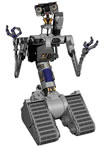First question: does anybody really have screens as small as 800x600 any more? Why favor that size (which for graphics-rich content like I'm supplying seems awfully cramped)?
Now, one of my "main" pages will be lots of thumbnails each linking to a full-page graphic on its own page, along with commentary. Without making the thumbnails so tiny as to be almost content-free I don't see them all fitting on one page, even a 1024x768 one--especially with room taken up for nav buttons. For organization's sake the set of thumbnails needs to be reachable by a single main nav button. For an idea of where I'm going with that, see the existing form of the site:
http://www.spinland.biz
and use the nav button for the Gallery. You see, a lot of thumbnails, with multiple groupings and associated commentary. No way that's all going to squeeze into a single 1024x768 page.
So, my next question: is it somehow an example of bad form to have main pages of different size based on content? Am I supposed to break things up into multiple pages? How then have them devolve back to a single "Gallery" link...have the main Gallery page provide its own nav buttons?
A follow-up question: in such cases, is the thumbnail==>page format considered a good one? Is this a case where something like a photo album object would be considered better? I hate to go that route because I think the images have less impact than if they're on their own pages, and using captions for the commentary seems weak.
The gallery isn't the only culprit. My Info page holds a CV that's way too long to fit into the aforementioned page length, too. Again, it seems unavoidable to have to expand on the comfy size limits VSD seems to want to encourage, and to have different sizes almost for every page, depending on content.
Ideas? I'm a 3D modeler, not a web designer, and I really know nothing about the "elements of style" when it comes to such things.
Thanks!
Visit Spinland Studios: http://www.spinland.biz




